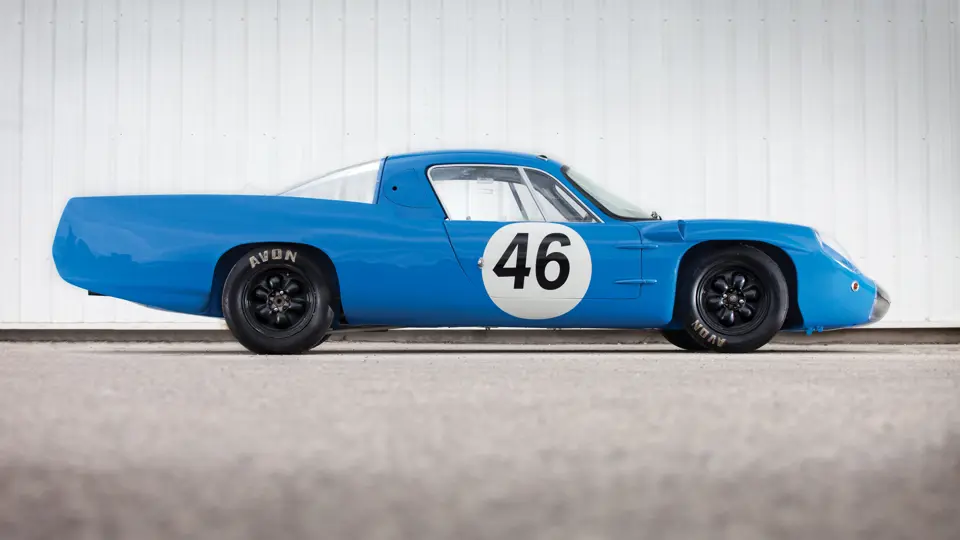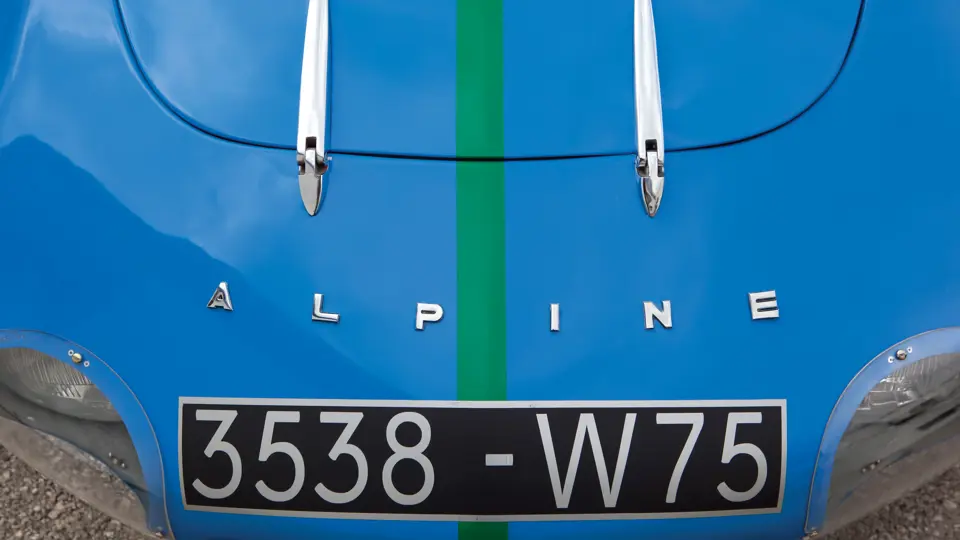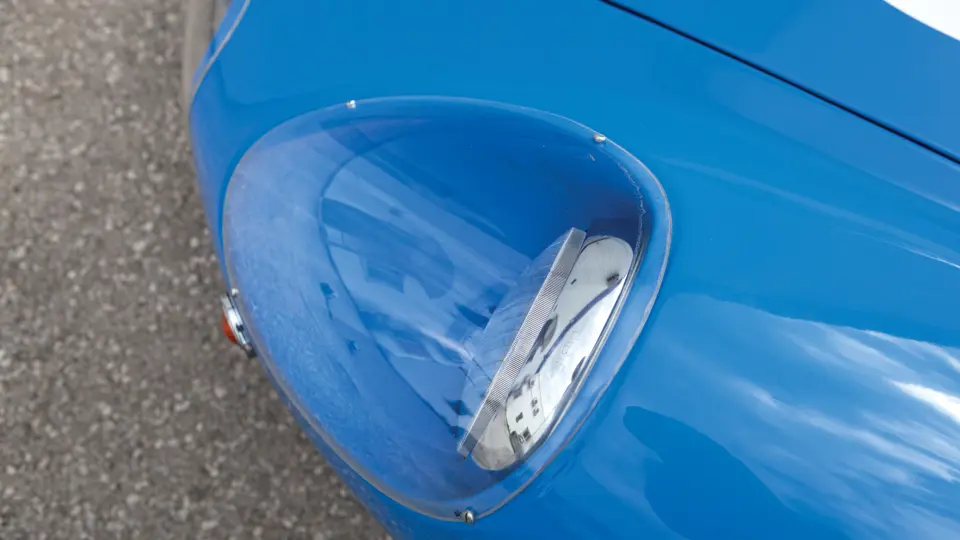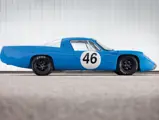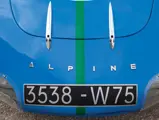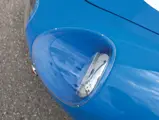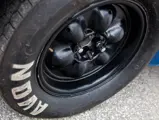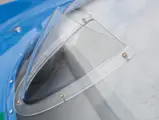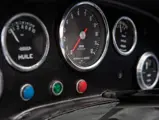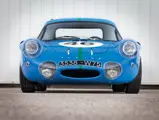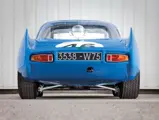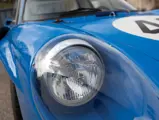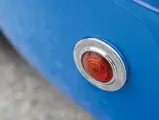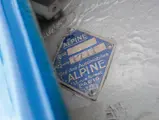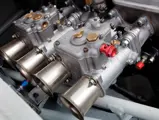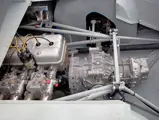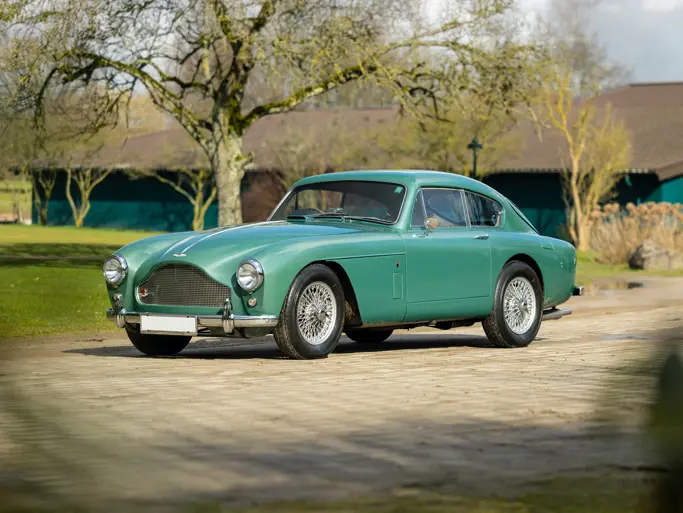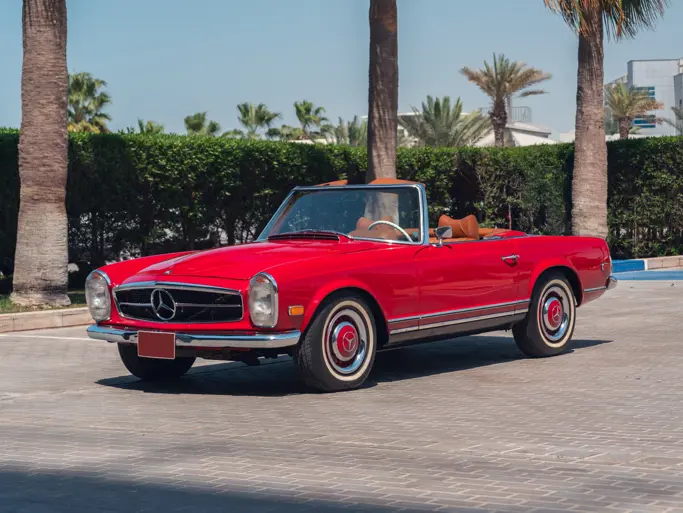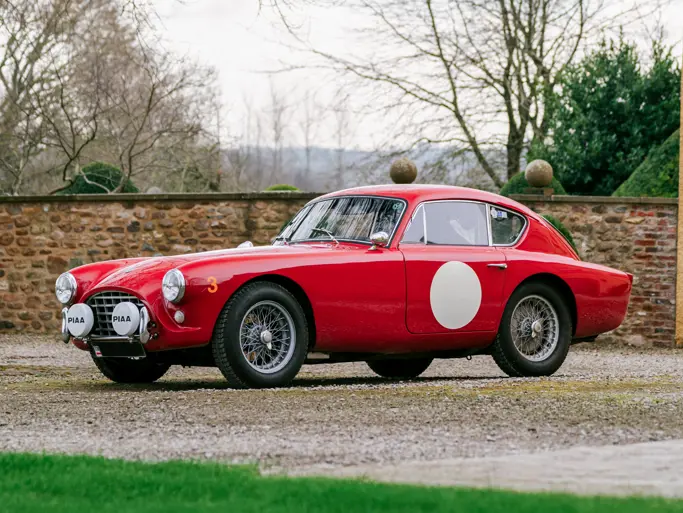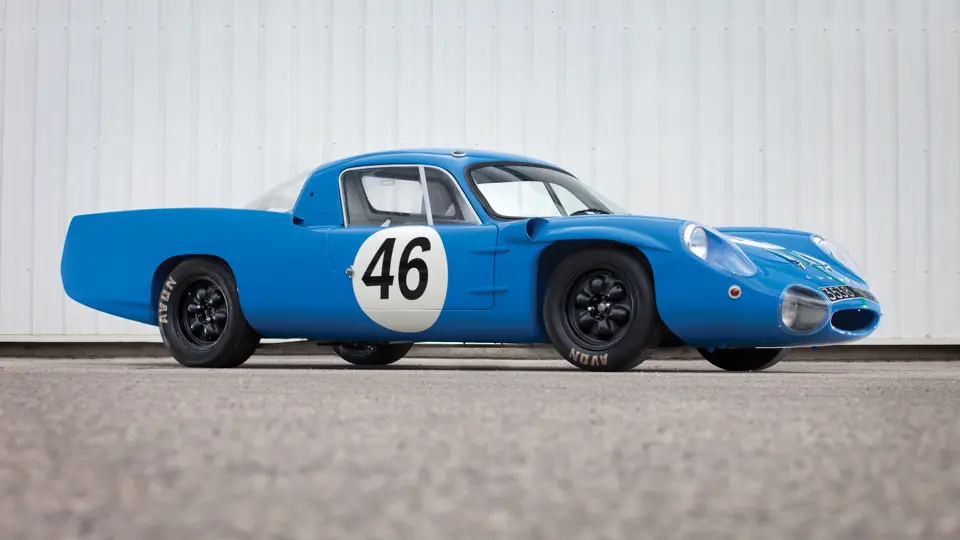
1964 Alpine M64
{{lr.item.text}}
€313,600 EUR | Sold
{{bidding.lot.reserveStatusFormatted}}
- The class winner at the 24 Hours of Le Mans and 12 Hours of Reims in 1964
- Single ownership for 37 years
- The last and most successful of three M64s produced
- Victorieuse de sa catégorie aux 24 Heures du Mans et aux 12 Heures de Reims 1964
- Un seul propriétaire depuis 37 ans
- La dernière et la plus titrée des trois M64 produites
115 bhp, 1,149 cc inline four-cylinder engine with double overhead camshafts, Hewland five-speed manual transmission, independent front and rear suspension with helicoidal springs and hydraulic shock absorbers, and four-wheel Girling disc brakes. Wheelbase: 2,300 mm
Moteur quatre-cylindres en ligne, 1 149 cm3, 115 ch, deux ACT, boîte manuelle Hewland cinq rapports, suspension avant et arrière indépendante avec ressorts hélicoïdaux et amortisseurs hydrauliques, freins Girling à disques sur les quatre roues. Empattement: 2 300 mm.
In 1955, Alpine was founded by Jean Rédélé, who originally modified and campaigned Renault 4CVs but quickly found success in many of the world’s most illustrious sports car races. Soon enough, Rédélé started building his own cars on the 4CV chassis and mechanicals, with the A106 being produced in 1955. Nevertheless, Rédélé’s passion for racing never wavered, and in 1962, he introduced the M63, which was developed specifically for sports car racing. An updated version, dubbed the M64, was released for the 1964 season, and it was largely based on its predecessor. Just three examples were built, chassis 1709, 1710, and 1711.
The final M64 produced, chassis 1711, debuted on the world stage at the 1964 24 Hours of Le Mans. At this event, taking place on 21 June, chassis 1711 was driven by Henry Morrogh and Roger Delageneste and started 36th on the grid, but it was ultimately the 17th car to cross the finish line. The car completed 292 laps and covered just under 3,921 kilometres, leading Morrogh and Delageneste to a 1st in class finish for the team’s second outing at the fabled race. With an average speed of 163 km/h, the Alpine finished eighth in the performance index and first in “thermal efficiency”, for the most fuel efficient car over the course of the race, averaging around 21 mpg!
The next event would be a few short weeks later, at the 12 Hours of Reims, where the Alpine won its class yet again with Delageneste and Morrogh as drivers. Roy Smith, author of Alpine and Renault: The Sports Prototypes Volume 1, mentions a story that was recounted to him by Henry Morrogh, where he was enjoying his victory with Juan Manuel Fangio, who attended the race, and Fangio was asked to take a “lap of honour” in the Alpine with Morrogh. Sure enough, Fangio hopped in the car and took it for a lap around the circuit, adding another exciting lap to a car with an already fantastic race record in 1964. Following its race at Reims, the Alpine was campaigned in several hill climbs and the Paris 1000 KM, where 1711 placed 2nd in class, to conclude the 1964 season.
After being fitted with an Allinquant oleo-pneumatic suspension system for the 1965 season, the car participated in its first event of that year, the Le Mans test on 4 April. Chassis 1711, accompanied by the two other M64s, as well as a M65 and an M63, finished 3rd in class and 23rd overall, behind the M65 and one other M64. Whilst this test might have seemed promising for the 24-hour race in June, 1711 sadly dropped out during the 15th hour, due to mechanical problems. The M64 returned to Reims once more in July, finishing 4th in class in the 12-hour race. Its last professional outing of its career would come just three weeks later, at the Cognac Grand Prix, with Mauro Bianchi behind the wheel.
Following its retirement from racing, the car was retained by Alpine as a prototype for the A210, and the rear section of the body was modified by the factory. The rail fins were added to allow back-to-back aerodynamic testing. It was sold in tired condition to J.L. Marnat, of France, who sold it, in October 1977, to its current French owner, who has retained the car in his possession ever since. Earlier this year, the car finished a complete restoration to M64 specifications, but it still retains its development tail that was successfully applied to the A210.
This Alpine is being offered for sale for the first time in 37 years, and it presents a compelling piece of Alpine and Le Mans history. After its recent restoration, chassis 1711 is ready to return to the track and relive its glory days.
Après avoir fait courir des Renault 4 CV modifiées, Jean Rédélé créait en 1955 Alpine, marque qui allait connaître le succès lors des plus grandes compétitions internationales. Les premières voitures de son crû étaient basées sur la plateforme et la mécanique de la 4 CV, l'A106 faisant son apparition en 1955. La passion de Rédélé pour la course ne l'ayant jamais quitté, il présentait en 1962 la M63, développée spécifiquement pour la compétition. La M64, version améliorée largement dérivée de sa devancière, voyait le jour pour la saison 1964. Elle était fabriquée à trois exemplaires portant les numéros de châssis 1709, 1710, et 1711.
La dernière M64 produite, châssis 1711, se lançait dès le début dans le grand bain en participant le 21 juin aux 24 Heures du Mans. Entre les mains de Henry Morrogh et Roger Delageneste, cette voiture prenait le départ en 36e position mais terminait 17e au classement général. Ayant effectué 292 tours et couvert la distance de 3 921 km, Morrogh et Delageneste s'adjugeaient la victoire de leur catégorie, belle performance pour la deuxième participation de l'équipe à la course fameuse. Avec une vitesse moyenne de 163 km/h, l'Alpine se classait huitième à l'indice de performance mais première au rendement énergétique, avec une consommation de 13,16 litres aux 100 km !
La course suivante, les 12 Heures de Reims, n'avait lieu que deux semaines plus tard et l'Alpine remportait à nouveau sa catégorie avec Delageneste et Morrogh. Roy Smith, auteur de Alpine and Renault: The Sports Prototypes Volume 1, évoque une histoire qui lui a été racontée par Henry Morrogh : alors qu'il savourait sa victoire en compagnie de Juan Manuel Fangio, qui participait à la course, il était demandé à Fangio de faire un « tour d'honneur » dans l'Alpine de Morrogh. Sûr de lui, Fangio montait dans la voiture et ajoutait ainsi un tour de circuit entre les mains fameuses au palmarès déjà superbe de cette M64. Après la course de Reims, l'Alpine participait à plusieurs courses de côte et aux 1000 Km de Paris où elle se classait deuxième de sa catégorie, belle façon de conclure la saison 1964.
Après avoir été équipée d'une suspension oléopneumatique Allinquant pour la saison 1965, la voiture participait à sa premières épreuve de l'année, les essais préliminaires des 24 Heures du Mans, le 4 avril. Le châssis 1711, accompagné des deux autres M64 ainsi qu'une M63 et une M65, signait le 23e temps, ce qui correspondait au troisième de sa catégorie, derrière la M65 et une autre M64. Ces temps pouvaient paraître prometteurs pour la course de 24 heures en juin, mais malheureusement 1711 abandonnait au quinzième tour, victime de problèmes mécaniques. La M64 retournait aux 12 Heures de Reims une fois de plus au mois de juillet, terminant quatrième de sa catégorie. La dernière apparition de sa carrière dans l'équipe officielle aura lieu trois semaines plus tard, au Grand Prix de Cognac, entre les mains de Mauro Bianchi.
Après son retrait de la compétition, cette voiture était conservée par Alpine comme prototype pour l'A210, et elle était équipée à l'usine d'un ânière différent. Cette longue queue avec ailerons verticaux fiât a jouté en vue d’essais aérodynamiques comparatifs. Fatiguée, elle était vendue à J.L. Marnat, qui s'en séparait à son tour et la cédait en octobre 1977 à son propriétaire français actuel, qui a conservé la voiture pendant toutes ces années. Au début de l'année, elle est sortie d'une restauration complète à ses spécifications M64, mais elle est encore équipée de sa carrosserie dont les modifications furent retenues pour l’A210.
Cet Alpine est proposée à la vente pour la première fois depuis 37 ans. Elle représente une pièce importante de l'histoire d'Alpine et des 24 Heures du Mans. Depuis sa restauration récente, cette voiture (châssis 1711) est prête à reprendre la piste pour revivre les pages glorieuses de son histoire.


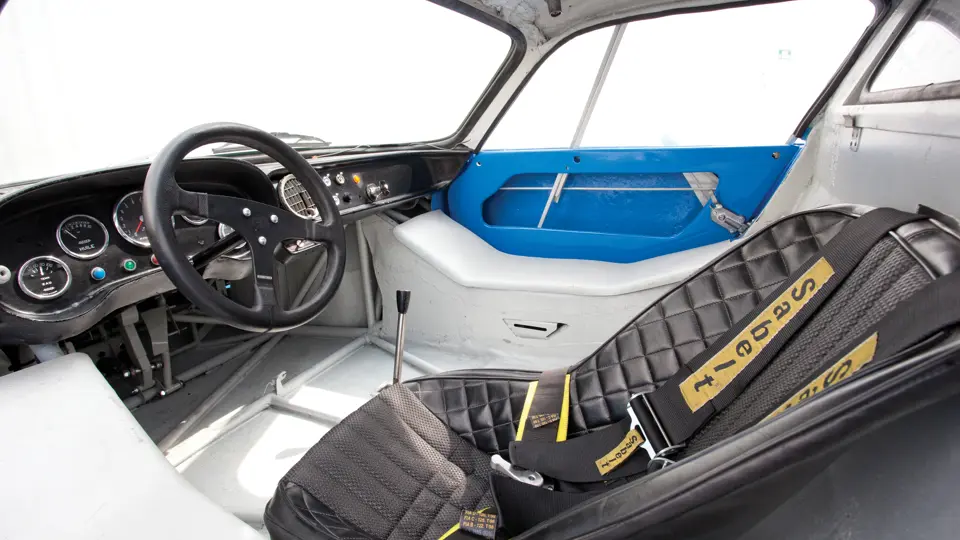




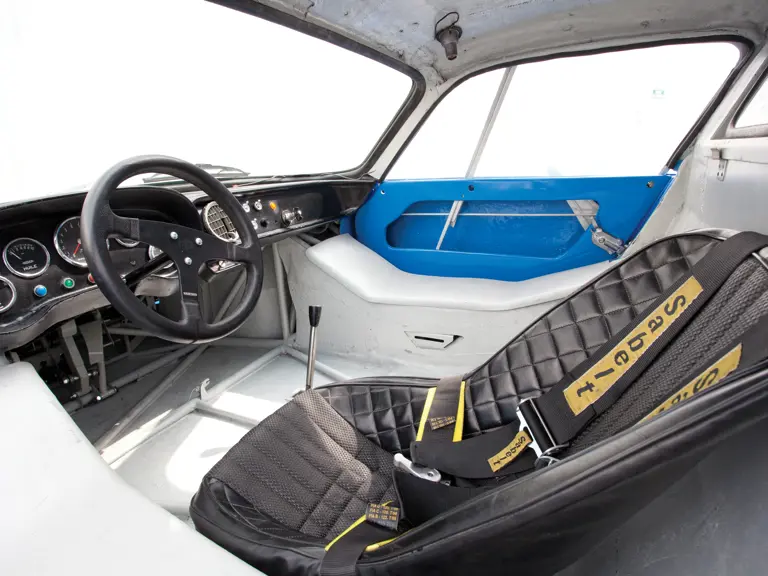





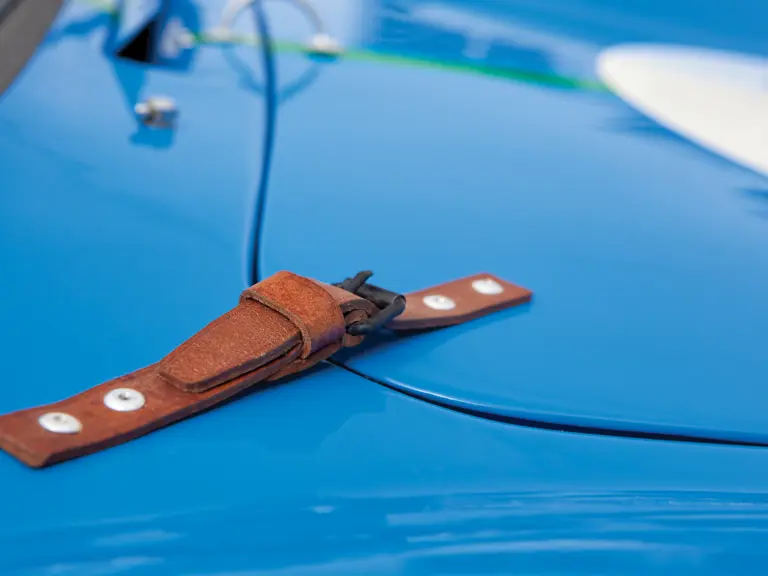
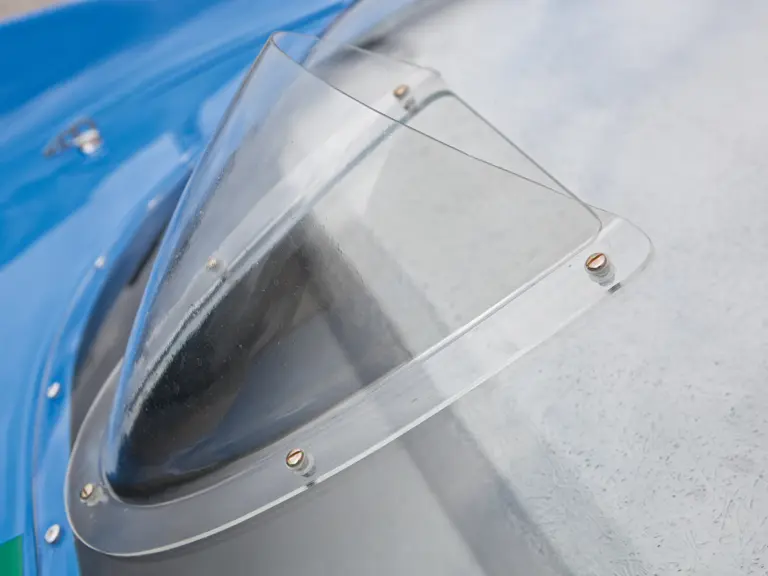
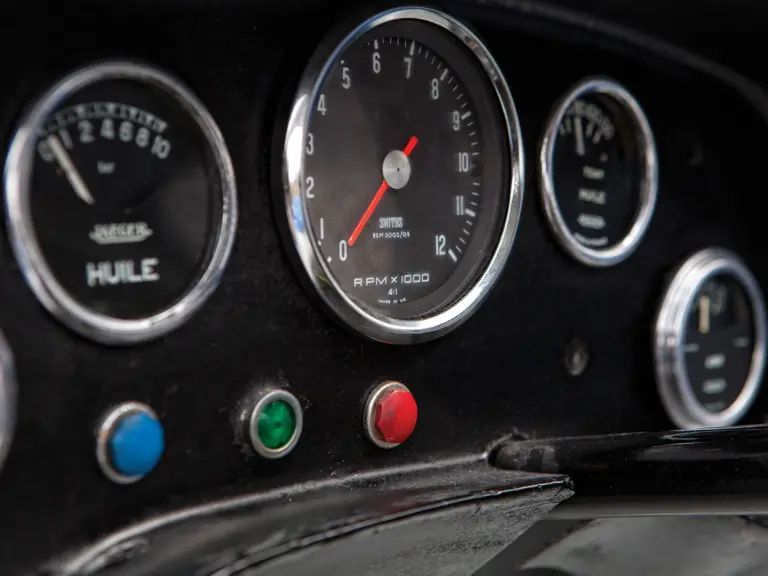

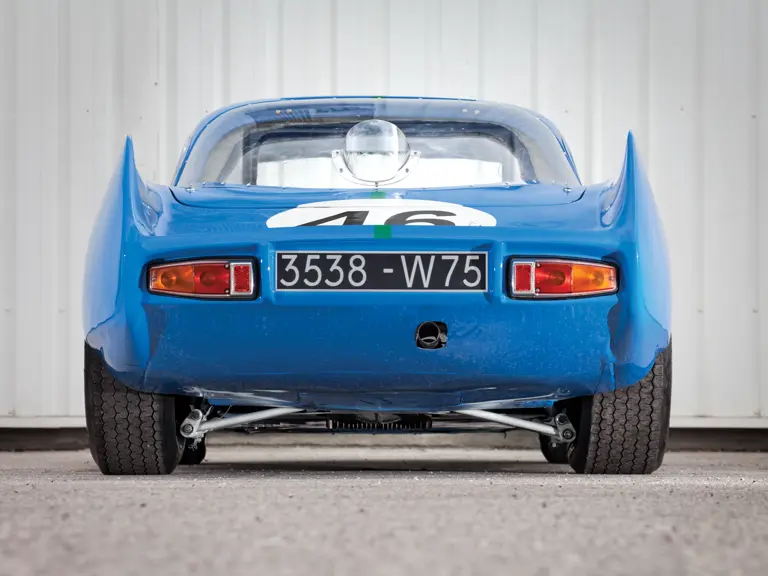
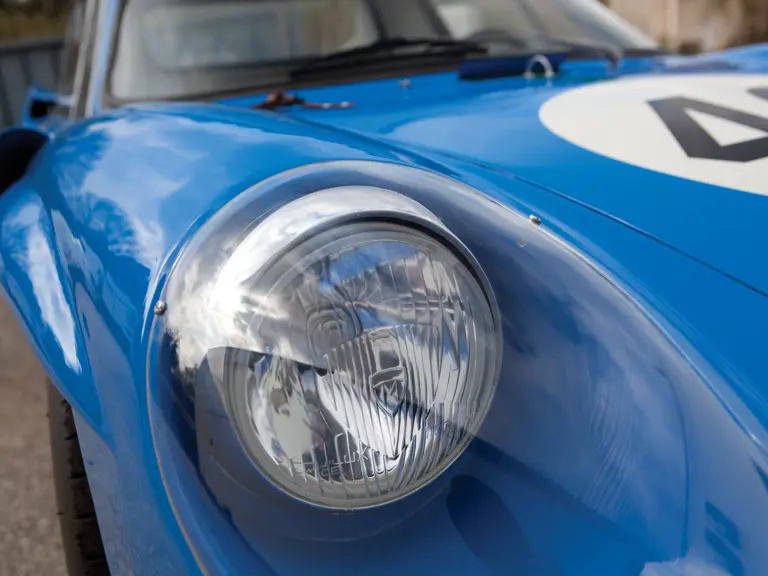
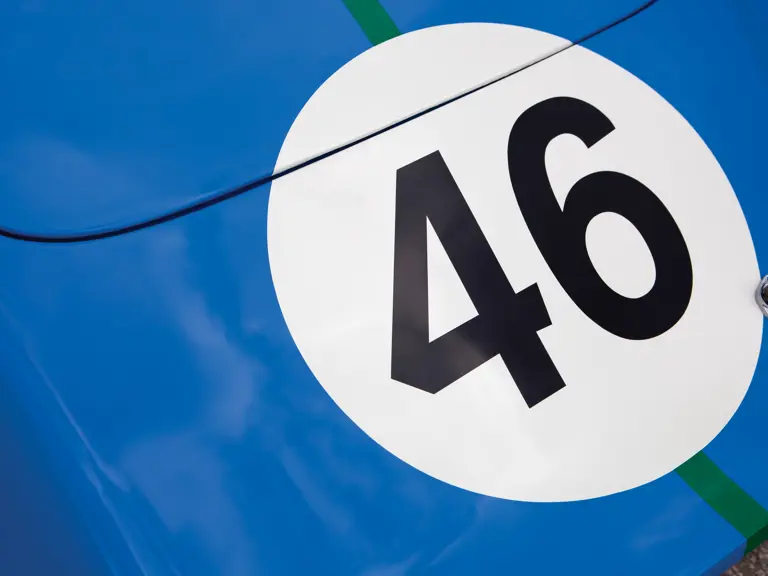
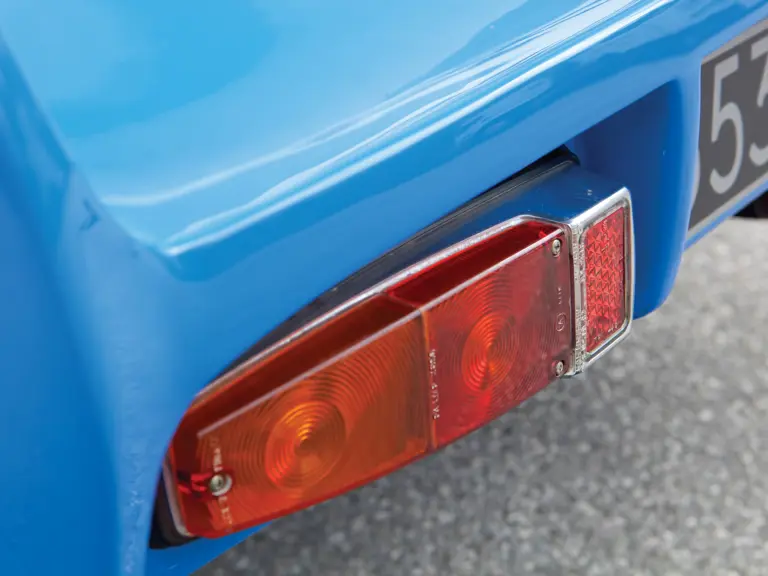
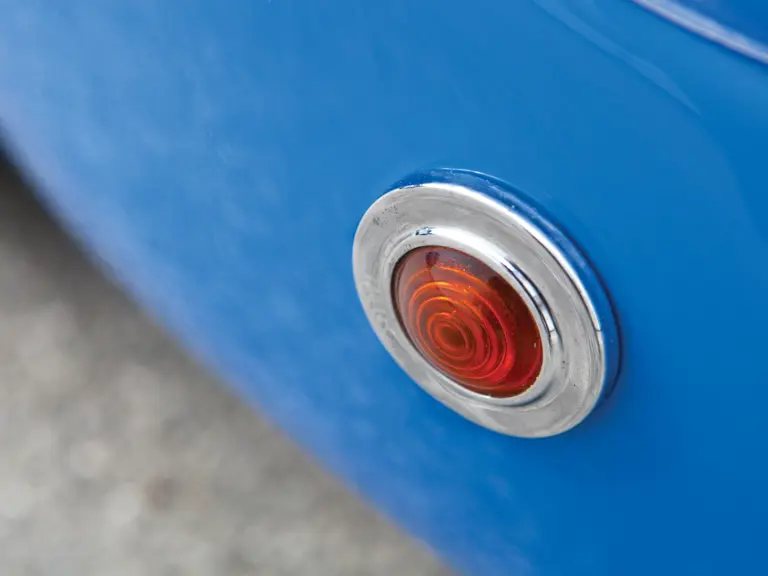

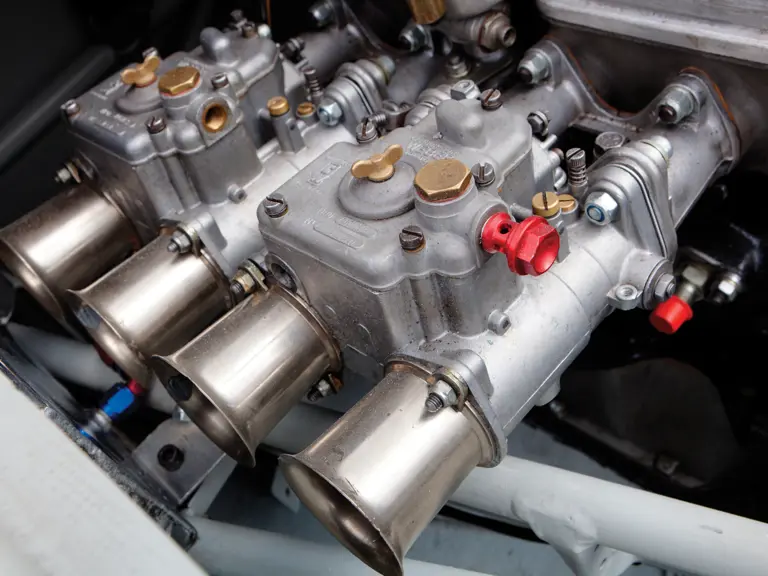

 | Monte Carlo, Monaco
| Monte Carlo, Monaco
